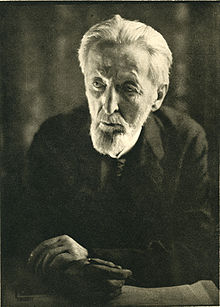Hans Horst Meyer
| Hans Horst Meyer | |
|---|---|

Meyer in Vienna about 1930
|
|
| Born |
March 17, 1853 Insterburg, East Prussia |
| Died | October 6, 1939 (aged 86) |
| Fields | pharmacology |
| Known for | Meyer-Overton hypothesis |
Hans Horst Meyer (March 17, 1853 – October 6, 1939) was a German pharmacologist. He studied medicine and did research in pharmacology. The Meyer-Overton hypothesis on the mode of action on general anaesthetics is partially named after him. He also discovered the importance of glucuronic acid as a reaction partner for drugs, and the mode of action of tetanus toxin on the body.
Meyer was born in Insterburg, East Prussia (now Chernyakhovsk, Russia). He studied medicine in Königsberg, Leipzig, Berlin and again in Königsberg. After his promotion to Doctor of medicine in Königsberg he worked with Oswald Schmiedeberg, one of the founders of pharmacology as an independent scientific discipline, in Strasbourg. In 1881 he was appointed to the Chair of Pharmacology in Dorpat (now Tartu, Estonia). Also in 1881, he married Doris née Boehm. Together they had three sons, Kurt Heinrich (1883–1952), Arthur Woldemar (1885–1933) and Friedrich Horst (1889–1894).
Between 1884 and 1904 Meyer occupied the Chair of Pharmacology in Marburg where he worked with Emil Adolf von Behring and Otto Loewi, winner of the 1936 Nobel prize in physiology or medicine. In 1904, Meyer moved to Vienna, and Loewi joined him until he was appointed to the Chair of Pharmacology in Graz. Ernst Peter Pick joined the department in 1911. Pick would later succeed Meyer as Chair. During Meyer's time in Vienna, he worked with three scientists who would eventually win the Nobel Prize in physiology or medicine. George Hoyt Whipple won the award in 1934, Corneille Heymans won in 1938 and Carl Ferdinand Cori captured the Nobel prize in 1947. Meyer retired in 1924 and remained in Vienna.
...
Wikipedia
